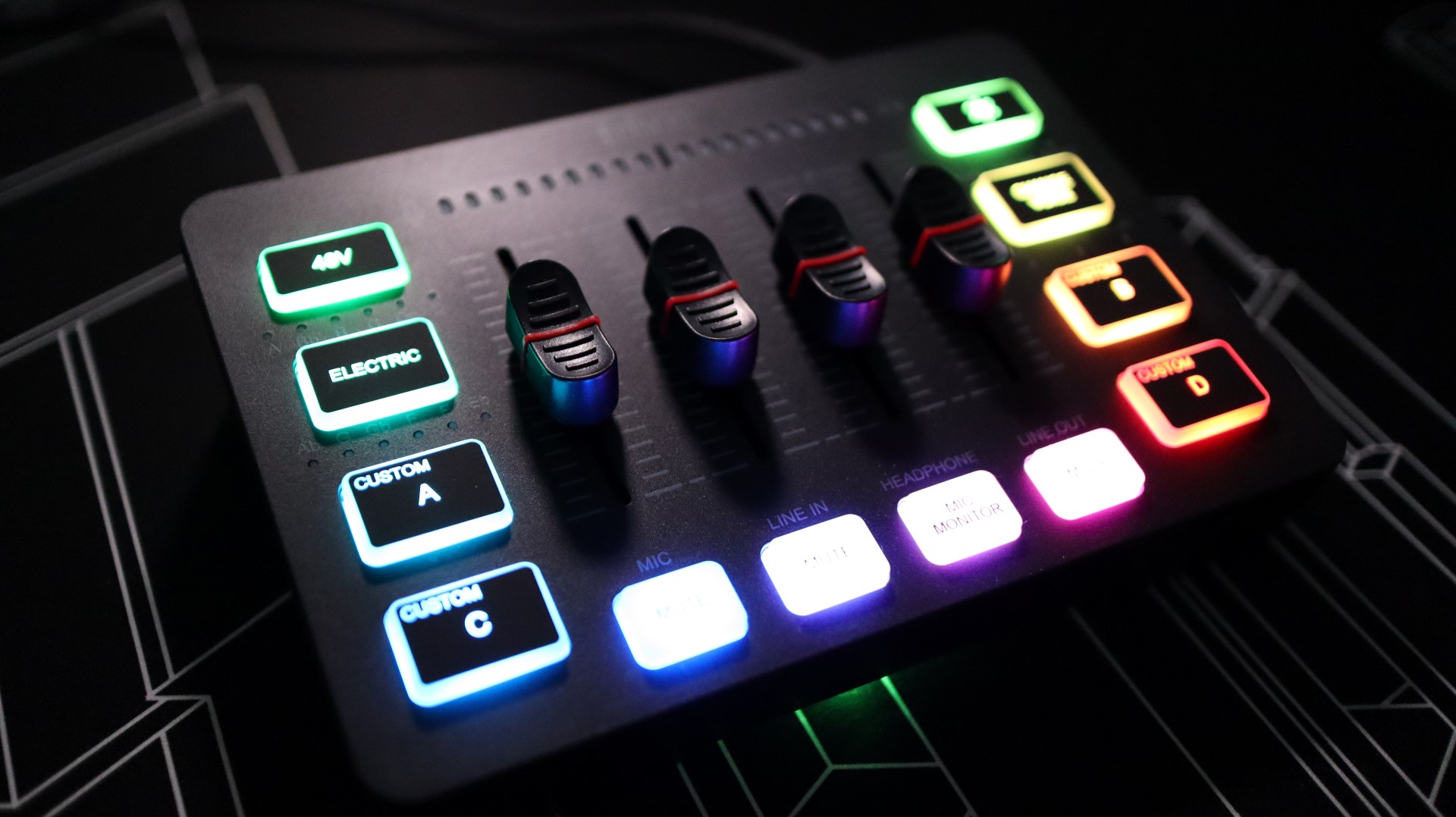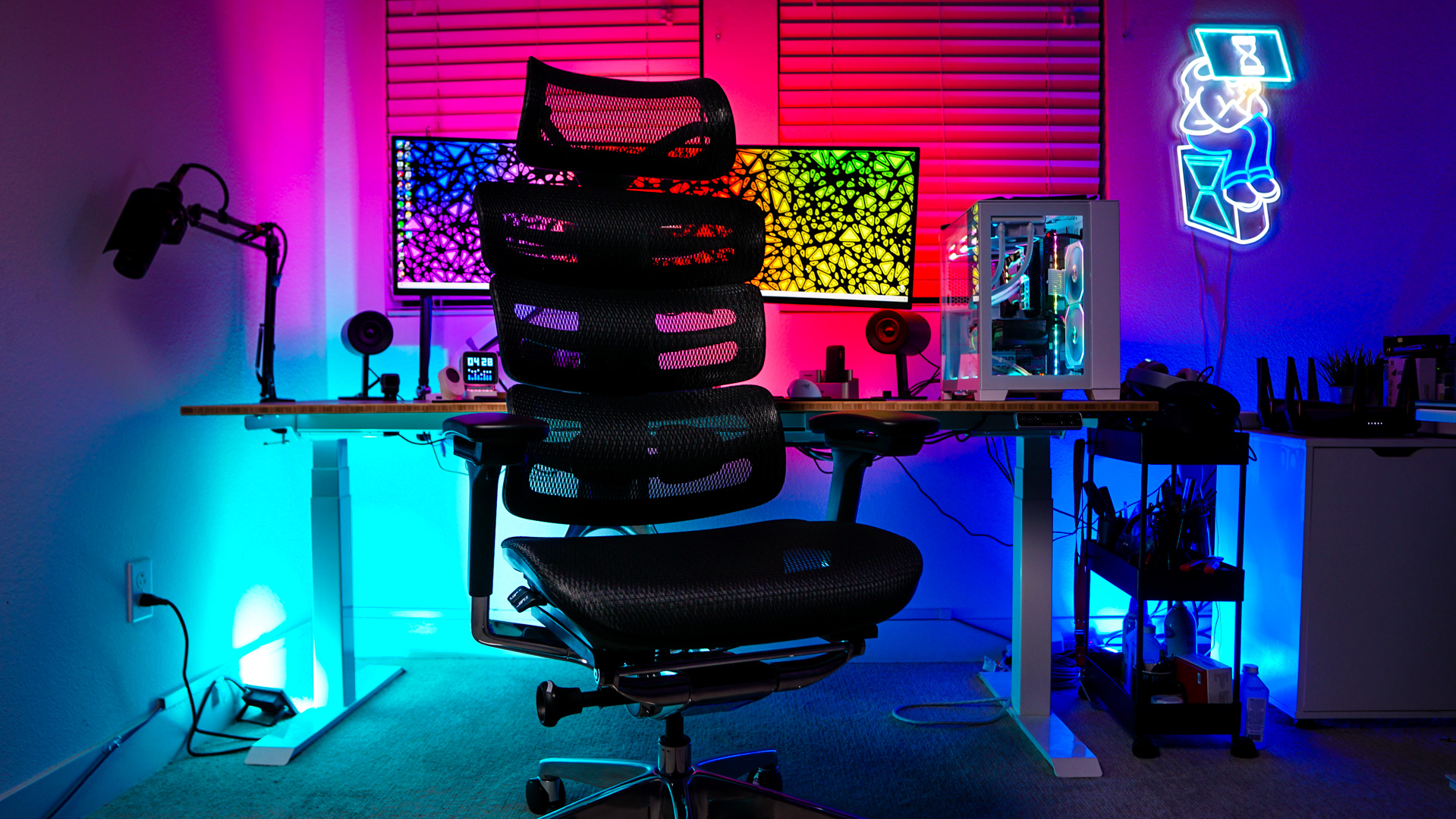Setup and Usage
As is expected with most USB devices, the FIFINE AmpliGamer SC3 is very easy to set up. Simply connect SC3 to your PC using the supplied USB cable, and let Windows detect and install the device. Once that is complete, the SC3 will be available within Windows in the list of audio devices for both input and output functions. At this point, you are all set up to start plugging in your audio devices and get to using the AmpliGame SC3. With no software other than the drivers that install automatically, there isn’t any need to work within your operating system, unless you want to make tweaks to the volumes via software, or make other adjustments outside of those that the SC3 provides.
My testing setup for the AmpliGame SC3 has been completed using the previously reviewed FIFINE AmpliGame AM8 microphone, paired up with a set of Corsiar Virtuoso RGB Wireless SE headphones via their 3.5mm wired connection for mic monitoring.
Buttons – The feel of the buttons is quite nice, with a slightly grippy texture. When pressing the buttons, they do have a bit of a mushy feel to them, but that is to be expected a bit, as the large buttons are covering smaller physical buttons underneath. That being said, they don’t feel unlike similar buttons on other audio devices I have looked at previously. When illuminated, the buttons are easy to see in low-light conditions, but even without illumination, the number and layout of the buttons makes finding the right one pretty easy.
Sliders – Each slider’s plastic cap is nicely shaped to fit your fingertips, and I think there is a good balance here for fingers of all shapes and sizes. Moving each slider up and down the SC3 is a pretty smooth experience, though there is a bit of friction here and there, which is accompanied by a sliding noise. Looking closer at the cutouts that the sliders travel in, you can see a bit of lubrication that was provided to help things along, but I would have loved to see a bit smoother movement here, and with little to no noise. The movement up and down has a good amount of resistance, so you don’t feel like you are making over adjustments because they are too loose, and you also don’t have to fight against too much resistance either.
Electric Button – I really tried to figure out what changes were being made to my audio when using the Electric button, but I just couldn’t tell a difference between any of the 12 settings.
Change Voice Button – Like I mentioned previously, this is a neat feature for a few minutes, and then it is back to normal sound. This definitely has its uses, but they are few and far between, in my opinion.
Custom Buttons – I think these could really come in handy, but they are plagued by a few issues. First is that the audio quality of the recordings is much lower than the live sounds you get from the SC3. There is also a delay in playback, which can really kill the moment if you are trying to throw in a sound bite at just the right time, only to be defeated by the playback delay.
Lighting – Your basic RGB lighting options are mostly here on the AmpliGame SC3, but I really wish there was just an all-white lighting option mixed in with all of the other rainbow colors. I do like that the buttons light up white when in-use, as it is a quick indicator of the status of the SC3’s options. Take a look at a few examples of the lighting options found on the SC3 below.
Using the AmpliGame SC3 is a very intuitive, and I found myself really only using the mute function once my preferred settings were in place with regards to levels. I don’t ever find myself adjusting my mic volume once it is set, but I do utilize the mute function somewhat often, which was made easy by the dedicated button. Any adjustments I make to other volumes are tied to my Elgato Streamdeck, which gives me a lot of volume tuning options via its companion software and its integration with the WaveLink software for my Wave:3 microphone. If I had additional external sound sources, I could see utilizing the Line In slider to adjust that volume as needed, as that is something I do quite often when live streaming. For someone outside the Elgato ecosphere, I think the AmpliGame SC3 would be a good option for controlling a few audio sources with a physical interface.
Below is an audio sample using the FIFINE AmpliGame AM8 microphone via the SC3’s XLR input. I utilized the 48V phantom power option, and had the switch on the back of the SC3 set to Dynamic, in order to match the AM8’s capsule design. I did notice a bit of a hiss with the standard recording, which then seemed to disappear when using the voice changer. I had to put the level all the way up on the SC3, as anything lower than that just didn’t want to pick up well. I also had to get right up to the mic to get it to pick up very well – something I didn’t experience when testing this microphone on its own previously.











